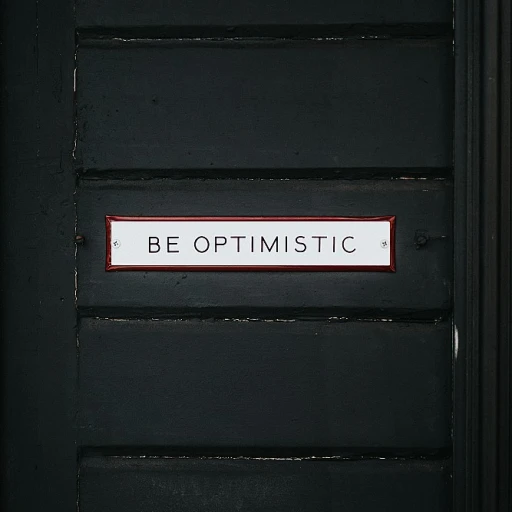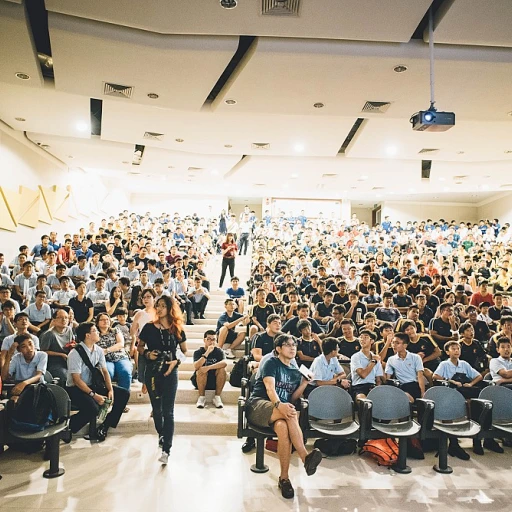
Understanding Business Intelligence in HR
Grasping the Concept of Business Intelligence in HR
In today's rapidly evolving business landscape, understanding the role of business intelligence (BI) in human resources is crucial. Business intelligence in HR involves leveraging data-driven strategies to enhance decision-making processes. This approach utilizes various tools and techniques to analyze raw data, transforming it into actionable insights that can drive organizational success.
Business intelligence in HR is not just about collecting data; it's about harnessing the power of data analytics and data visualization to identify trends and patterns that can inform HR strategies. By integrating machine learning and artificial intelligence into HR processes, organizations can elevate their HR functions to a new level of efficiency and effectiveness.
The Role of Technology in BI for HR
Technological advancements have made it easier for HR departments to implement business intelligence strategies. Tools such as Microsoft Power BI, Power Apps, and Power Automate are transforming how HR professionals conduct data analysis and manage data sources. These tools allow for real-time data processing, enabling HR teams to make informed decisions quickly.
Moreover, the integration of SQL Server and Python in data analysis exercises enhances the ability to handle big data efficiently. This integration not only supports data-driven decision-making but also fosters a culture of continuous learning and improvement within HR departments.
Building Skills for Effective BI Implementation
To fully leverage the benefits of business intelligence in HR, it is essential for HR professionals to develop specific skills. Engaging in online courses and training programs can enhance their understanding of BI tools and techniques. These educational exercises can improve their proficiency in using data models and conducting intelligence exercises.
For those looking to deepen their knowledge, exploring resources on how AI is revolutionizing HR data analysis can provide valuable insights into the transformative power of AI in HR analytics.
In conclusion, understanding business intelligence in HR is about more than just technology; it's about adopting a mindset that values data-driven insights to improve HR processes. As we delve into the key benefits of BI in HR, we will explore how these strategies can lead to more informed and strategic decision-making.
Key Benefits of Business Intelligence for HR
Empowering HR Through Business Intelligence Strategies
Business intelligence has revolutionized the way human resources departments operate, delivering unprecedented data-driven insights for better decision making. By transforming raw data into actionable intelligence, HR professionals can harness the power of artificial intelligence to optimize various processes.
One of the core benefits is the ability to leverage complex data analytics for strategic HR management. This involves utilizing tools like SQL Server for robust data analysis, alongside Microsoft Power's suite of applications, including Power Apps and Power Automate. These tools facilitate real-time data management and promote a higher level of business intelligence through dynamic data visualization.
Moreover, machine learning algorithms can enhance workforce training programs, offering personalized learning experiences. By analyzing data from various sources, HR teams can identify trends in employee performance, tailor training courses, and ultimately increase workforce efficiency through targeted skill-building exercises.
On the customer side, HR can apply business intelligence strategies to improve employee satisfaction, predicting potential turnover and implementing preventive measures. Such predictive analytics, powered by big data, assists in formulating strategies to maintain a motivated workforce.
Furthermore, AI-driven analytics enable HR departments to build sophisticated data models that support data visualization, making it simpler for managers to interpret complex data sets. This approach not only supports strategic decision making but also enhances the department's overall intelligence exercises, ensuring the business' HR strategies remain competitive and efficient.
Implementing AI-Driven Analytics in HR
Deploying Advanced Analytics Tools
The integration of AI-driven analytics in HR begins with deploying advanced tools that most effectively leverage the combined capabilities of data analysis and machine learning. Microsoft has emerged as a strong contender in this space, offering solutions such as Power BI, Power Apps, and Power Automate, which help in processing data in real time and visualizing it effectively. These tools are designed to handle big data, making it possible to turn raw data into actionable insights with minimal manual intervention.
Leveraging Machine Learning for Data Analysis
At the heart of AI in HR analytics lies the power of machine learning, which enhances the accuracy and efficiency of data analysis. With machine learning, organizations can analyze vast streams of data quickly and efficiently, enabling more intelligent decision making. A few common tools utilized for building and deploying machine learning models include Python and SQL Server, offering flexibility and scalability tailored to organizational needs.
- Data Sources: Effective analytics begin with identifying and integrating diverse data sources, including customer feedback, sales data, and personnel records, to create a comprehensive data model.
- Training and Development: Companies can optimize the training of their workforce by selecting relevant intelligence exercises tailored to each employee's skill level, ensuring that skill gaps are addressed efficiently and comprehensively.
- Visualization: The deployment of data visualization tools assists in translating complex datasets into easy-to-understand formats, facilitating more intuitive and digestible insights. Power BI, in particular, strengthens this aspect by delivering these visuals on a streamlined platform.
Optimizing HR Processes
To fully realize the potential of AI-driven analytics, organizations must incorporate intelligent strategies into their HR processes. By focusing on data-driven approaches, HR professionals can enhance employee management practices and improve overall business performance. For those interested in exploring AI-powered login services to further optimize HR operations, a comprehensive guide on enhancing employee management is available, providing valuable insights and practical tips.
Ultimately, the implementation of AI-driven analytics in HR not only streamlines processes but also equips companies with the intelligence needed to adapt to evolving business environments. By promoting continuous learning and the use of robust analytic tools, businesses can remain competitive and forward-thinking in today's fast-paced world.
Case Studies: Success Stories in HR Business Intelligence
Real-world Examples of AI-Driven HR Strategies
Utilizing artificial intelligence in HR can truly transform traditional methods and create more efficient processes. One company decided to integrate AI-driven analytics to model their data for recruitment purposes. By adopting advanced business intelligence strategies, they were able to aggregate raw data from multiple data sources, using powerful tools like Power Desktop and SQL Server to enhance data visualization and analysis. Another organization leveraged AI to power their learning and development programs. Through online courses and training exercises enriched with machine learning insights, they provided employees with customized learning paths. This adaptation improved employee skills and led to real-time adjustments in training modules, fostering a more responsive and dynamic learning environment. Moreover, some businesses are actively using AI for predictive analytics. By analyzing big data, they can forecast trends and make informed decisions on workforce requirements and customer engagement. This data-driven approach not only optimizes HR processes but also aligns closely with wider business objectives. The adoption of AI and machine learning in HR has also extended to employee retention strategies. By implementing intelligence exercises that focus on data analytics, companies have successfully identified factors influencing employee turnover. Through this analysis, proactive measures and distributions of resources optimized retention levels, showcasing how AI can have a profound impact on employee satisfaction and business growth. Each of these examples demonstrates the transformative power of AI in HR, emphasizing the importance of evolving with current trends to harness the full potential of new technological advancements in the field.Challenges and Ethical Considerations
Overcoming Hurdles and Ethical Concerns
Navigating the integration of AI and business intelligence into human resources certainly comes with its fair share of challenges, and it's crucial that these potential pitfalls are openly addressed. Businesses often face challenges with data, software integration, and power analytics. The difficulty lies in curating raw data into a coordinated data model and using power data to inform real-time decision making. Despite the allure of leveraging big data and artificial intelligence, many HR departments struggle with the compatibility of innovative solutions such as Microsoft Power apps and Power Automate with existing HR systems. One of the main technical hurdles remains the accurate analysis of vast data sources. Incorporating tools like SQL Server or leveraging powerful languages such as Python for effective data analysis necessitates significant training and upskilling of HR professionals. This training not only involves learning new software but also adopting intelligence exercises focused on improving data-driven decision making. Businesses must invest in comprehensive courses and real-world exercises to adequately prepare their teams for these advanced analytics tasks. Moreover, ethical considerations form a significant piece of the puzzle. With machinery possessing the ability to process immense data with formidable power, questions about customer privacy and data security are ever-present. It's essential for companies to ensure that their analytics strategy is aligned with ethical norms, safeguarding the privacy of individuals while paving the way for transparent data visualization. Going forward, the integration of AI in HR analytics must be approached with a strategic mindset that accounts for evolving trends and emerging ethical standards. This requires a balance between embracing new technologies and maintaining ethical integrity, a challenge that underscores the transformative journey of adopting AI-driven insights in human resources.Future Trends in AI and Business Intelligence for HR
Emerging Trends Shaping HR with AI and Business Intelligence
As the landscape of human resources continues to evolve, the integration of artificial intelligence and business intelligence is becoming increasingly pivotal. The future of HR is set to be transformed by several key trends that leverage the power of data and analytics to enhance decision-making and operational efficiency.
Data-Driven Decision Making
The use of big data and data analytics in HR is no longer optional. Organizations are harnessing data-driven strategies to improve recruitment, employee engagement, and performance management. With tools like Microsoft Power BI and SQL Server, HR professionals can perform real-time data analysis, transforming raw data into actionable insights. This shift enables more informed decision-making processes, optimizing HR functions across the board.
Advanced Learning and Development Programs
AI-driven training and learning programs are gaining traction, offering personalized learning experiences that cater to individual employee needs. By utilizing machine learning algorithms, HR departments can create tailored training exercises that enhance employee skills and competencies. Online platforms offering courses in Python and other relevant technologies are becoming essential in developing a future-ready workforce.
Automation and Workflow Optimization
Automation tools like Microsoft Power Automate and Power Apps are revolutionizing HR processes by streamlining repetitive tasks and workflows. These tools enable HR teams to focus on strategic initiatives rather than administrative duties, increasing overall productivity and efficiency. As automation becomes more prevalent, the role of HR professionals will shift towards more strategic business functions.
Real-Time Analytics and Predictive Modeling
The ability to perform real-time analytics is becoming a cornerstone of modern HR strategies. Predictive modeling, powered by advanced data visualization and data model techniques, allows HR professionals to anticipate workforce trends and make proactive adjustments. This capability is crucial for managing talent effectively and staying ahead in a competitive business environment.
Integration of AI in HR Software
HR software is increasingly incorporating AI features to enhance user experience and functionality. From chatbots that assist with customer inquiries to AI-driven analytics that provide deeper insights into employee data, the integration of AI in HR software is set to redefine how HR departments operate. As these technologies continue to evolve, they will offer even more sophisticated solutions for managing human capital.
In conclusion, the future of HR lies in the strategic application of AI and business intelligence. By embracing these trends, organizations can not only enhance their HR processes but also gain a competitive edge in the ever-evolving business landscape.












